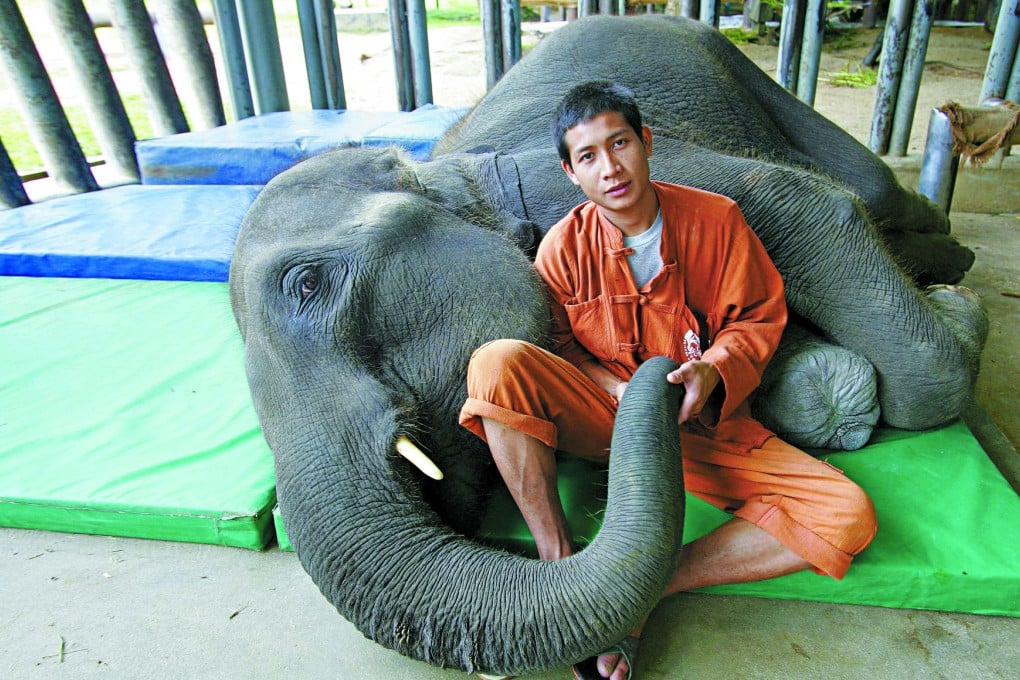
"We were called by her mahout, and Mosha and her mother were brought here. We almost lost her during the treatment, because her wound became infected. But we treated her with fresh medicinal herbs and then she got up and the wound healed beautifully," says Bangkok-born Soraida, who established the FAE hospital, the world's first dedicated to elephants, in 1993.
I see myself as my elephants' mother. If I'm away, I'll call them every day.
Now, Mosha is eight and taking her first, tentative steps on the most sophisticated prosthetic leg ever created for an animal of her size. The newly fitted artificial limb means the difference between life and death for her.
"If she didn't have it, she would die in the next five to 10 years," says Dr Preecha Phuangkum, chief vet at the FAE hospital.
Elephants can walk on three legs but doing so shortens their lifespan dramatically, as Mosha's curved spine and bent front leg reveal.
"An elephant's front legs carry two-thirds of their body weight. So when she bends down, it puts a huge strain on her good leg. Without the artificial limb, her good leg would go and then her other joints, too," says Preecha.